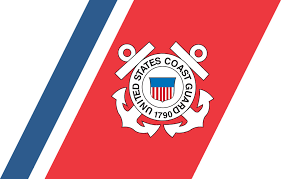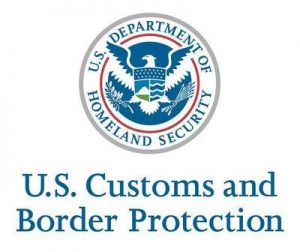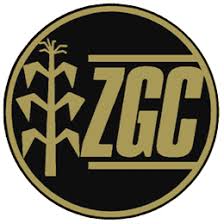UPDATE 5 NOV 2020:
Due to HURRICANE ZETA, please be advised of the following:
This notice EXTENDS MSIB Vol. XX Issue 87a “UPDATED IHNC Lock Closure and GIWW Alternate Route” dated August 30, 2020 until repairs are complete. The estimated project completion is November 25, 2020.
UPDATED Inner Harbor Navigational Canal Lock Closure and GIWW Alternate Route
This MSIB supersedes Volume XX Issue 087 “Inner Harbor Navigational Canal Lock Closure and GIWW Alternate Route” dated August 17, 2020.
Commencing on or about September 4, 2020 and continuing for approximately 60 days, the Inner Harbor Navigational Canal (IHNC) will be closed 24 hours per day to all marine traffic due to dewatering operations, repairs, and maintenance to the IHNC Lock. For the duration of the closure, an alternate route has been established utilizing the Mississippi River (Alternate Route). The Alternate Route will be completed by transiting via the Baptiste Collette Bayou Channel, through Breton and Chandeleur Sounds, as well as to and from the eastern reaches of the Gulf Intracoastal Waterway (GIWW) near its intersection with the Gulfport Ship Channel.
The Alternate Route will be marked with a mixture of physical and virtual Aids to Navigation (ATON) and will serve as the primary means of navigation for east/west traffic along the GIWW during the planned closure of the IHNC Lock. An approximate position listing for intended ATON is provided at the bottom of this MSIB. Channel condition survey results can be found on the Army Corps of Engineers’ website at http://hydrosurvey.mvn.usace.army.mil/navpgs/n_giww_chandeleur.asp.
Coast Guard Sector New Orleans will maintain a webpage containing links and current information pertaining to the Alternate Route located on Homeport under News and Events section at https://homeport.uscg.mil/port-directory/new-orleans. Those vessels seeking to utilize the Alternate Route should familiarize themselves with all of the sources listed in each of the sites linked on the Sector New Orleans Alternate Route Information webpage. All mariners transiting the Alternate Route shall closely monitor Automatic Information System (AIS) technology and establish appropriate bridge-to-bridge communications when interacting with other vessel traffic. Vessels requiring additional assistance entering and exiting the Mississippi River via Bayou Baptiste Collette, may contact Vessel Traffic Center Lower Mississippi River via VHF-FM channels 11, 12, and 67, and the telephone number listed below.
Additionally, mariners maintaining vessels east of the IHNC Lock to Mile Marker 22 East of Harvey Lock (Regulated Navigation Area East, or RNA) will need to maintain extra vigilance. Those mariners with vessels transiting within the RNA East not part of an Annual Hurricane Operations Plan (33 Code of Federal Regulations 165.838) will need to have immediate means of evacuating should the RNA be enforced. This includes vessels without their own propulsion systems that will need to maintain sufficient means of evacuating their vessel(s) in accordance with the RNA.
The Coast Guard recognizes the unique situation that the IHNC Lock closure, combined with the implementation of 46 Code of Federal Regulations (CFR) Subchapter “M” poses for the maritime community. To that end, for such vessels that normally operate only on Rivers routes (less than three nautical miles from shore), the following equipment will not be required while on the Alternate Route for the duration of the IHNC Lock closure:
1. 46 CFR 140.725 (a): fathometer
2. 46 CFR 141.370: increase of visual distress signals from 03 day/03 night to 06 day/06 night
Due to the distance from shore on this route, federal regulations require vessels to carry a rigid buoyant apparatus that meets 46 CFR 160.010. In light of this unique situation, one or more of the following is required to meet the intent of 46 CFR 141.305:
1. A skiff that meets the requirements of 46 CFR 141.330 (a) through (f); OR
2. The vessel and company create and practice written procedures for evacuating crewmembers onto the tow or other safe location as per 46 CFR 141.305 (d)(3)(ii); OR
3. A four-hour communications schedule between each vessel traveling “light boat” (without any barges) and its operating company.
The following critical procedures, drills, and assessments normally expected of vessels on Lakes, Bays, and Sounds routes are expected to be complied with and conducted by all vessels prior to engaging in transits on the Alternate Route into the Breton and Chandeleur Sounds:
1. 46 CFR 140.425 (a): owner or managing operator of a towing vessel must establish procedures to address fall overboard prevention and recovery of persons in the water
2. 46 CFR 140.605 (b): towing vessel must be maintained and operated so the watertight integrity and stability of the vessel are not compromised
3. 46 CFR 140.635 (a): officer in charge of a navigational watch must conduct a navigation assessment for the intended route and operations prior to getting underway
4. 46 CFR 140.705 (b)(1): charts, including electronic charts, of appropriate scale to make safe navigation possible
Weather: The partial exposure of the Alternate Route to the Gulf of Mexico makes safe transit weather-dependent. It is recommended that transits not be attempted when winds exceed 15 knots and/or seas greater than 2 feet. Mariners should carefully consider weather forecasts for the length of the entire transit prior to getting underway.
Mariners are reminded to secure weather tight/watertight doors/hatches and windows as dictated by the sea state and weather conditions.
Forecasting tools from the National Weather Service:
• Spot forecasting for Alternate Route: http://go.usa.gov/chU8G
• Breton Sound: https://forecast.weather.gov/MapClick.php?lon=-89.30269&lat=29.34951#.XyBXmJ5KhPY
• Chandeleur Sound: https://marine.weather.gov/MapClick.php?lon=-89.04732&lat=29.89126#.XyBY3p5KhPY
• Mississippi Sound: https://marine.weather.gov/MapClick.php?lon=-89.02322&lat=30.32032#.XyBZWJ5KhPY
• Point and click (select your area of interest): http://forecast.weather.gov/gridpoint.php?site=lix
Experience: It is recommended that companies initially assign mariners familiar with eastern GIWW transits to the Alternate Route transits and that mariners expected to make later Alternate Route transits first travel with a mariner experienced on the Alternate Route.
Tow size: Barge tow lengths should not exceed 600 feet (plus typically-sized pushboat of up to 120 feet long). This translates to a six-pack of standard barges (each 35 feet x 195 feet), for an overall tow size of 70 feet wide x 600 feet long; or a two 30K barrel tank barge tow (each 54 feet x 300 feet) strung out or in tandem for a maximum size of 54 feet wide x 600 feet long or 108 feet wide x 300 feet long. Other than the aforementioned lengths and dimensions, there are no limits to the types of barges or cargoes carried on the Alternate Route.
Draft restrictions: Surveys conducted in July 2020 indicated a minimum water depth of 12 feet, so loading is not recommended past 10 feet vessel draft. Tows should be made up and secured consistent with a typical eastern GIWW tow, as dictated by company policies and practices. Experience has shown that tows transiting the eastern GIWW have been adequately secured, however additional wires, lines, and bridles may be prudent.
Traffic management: One-way traffic at the northern portion of Baptiste Collette will be required during transit of the Alternate Route. Tows will have to hold up in the River prior to transiting the Sound. Westbound tows will have priority due to the lack of safe refuge in the Sound. To avoid meeting in the narrow portions of Baptiste Collette, mariners should closely monitor AIS, make timely (estimate one hour ahead) radio Securité calls when outbound or inbound at Baptiste Collette, and establish appropriate bridge-to-bridge radio communications with other vessels.
Deep draft pilots recommend that tows entering Bayou Baptiste Collette from the Mississippi River travel south of the Jump Shoal buoy (#10A) and top around then proceed northbound on the east side of the River, and out of the deep draft sailing line, to the Baptiste Collette entrance. Additionally, it is recommended that tows use the shallow east bank of the River between Jump Shoal Buoy #10A and Wilders Flats light #8 for pushing in while awaiting transit.
Vessel-to-vessel communications on the Mississippi River are made on VHF-FM channel 67.
Tows inbound to Gulfport should check in with the Gulfport Pilots on VHF-FM channel 10 at a point four miles from Ship Island Pass to ascertain the traffic situation and to avoid meeting in the Pass. Tows departing Gulfport should also contact the Gulfport Pilots Port prior to departing the GIWW and entering the Ship Channel.
Breton/Chandeleur ICW Alternate Route:
Aid Name Latitude Longitude
Turn/wpt 5 – Ship Island Pass
Lighted Buoy 1 30-10’10.090” 088-59’24.151”
Lighted Buoy 2 30-10’10.192” 088-59’26.426”
V-AIS 3 30-09’10.770” 088-59’27.662”
Lighted Buoy 4 30-09’10.872” 088-59’29.937”
Aid Name Latitude Longitude
Lighted Buoy 5 30-08’11.362” 088-59’31.177”
V-AIS 6 30-08’11.464” 088-59’33.452”
Lighted Buoy 7 30-07’12.141” 088-59’34.680”
Lighted Buoy 8 30-07’12.243” 088-59’36.954”
V-AIS 9 30-06’12.899” 088-59’38.183”
Lighted Buoy 10 30-06’13.001” 088-59’40.457”
Lighted Buoy 11 30-05’13.501” 088-59’41.694”
V-AIS 12 30-05’13.603” 088-59’43.967”
V-AIS 13 30-04’14.191” 088-59’45.198”
Lighted Buoy 14 30-04’14.293” 088-59’47.472”
Light 15 30-03’14.871” 088-59’48.702”
V-AIS 16 30-03’14.973” 088-59’50.975”
V-AIS 17 30-02’15.579” 088-59’52.204”
Buoy 18 30-02’15.680” 088-59’54.476”
V-AIS 19 30-01’16.241” 088-59’55.707”
Light 20 30-01’16.343” 088-59’57.979”
Buoy 21 30-00’16.921” 088-59’59.207”
V-AIS 22 30-00’17.023” 089-00’01.479”
Light 23 29-59’17.570” 089-00’02.708”
V-AIS 24 29-59’17.671” 089-00’04.980”
V-AIS 25 29-58’18.249” 089-00’06.207”
Buoy 26 29-58’18.351” 089-00’08.478”
Light 28 29-57’19.071” 089-00’11.972”
Buoy 29 29-56’19.651” 089-00’13.197”
V-AIS 30 29-56’19.752” 089-00’15.467”
Light 31 29-55’20.331” 089-00’16.692”
V-AIS 33 29-54’21.009” 089-00’20.186”
Buoy 34 29-54’21.110” 089-00’22.455”
Light 36 29-53’20.440” 089-00’26.027”
Turn/wpt 4
Light 37 29-52’34.528” 089-00’41.707”
V-AIS 38 29-52’35.171” 089-00’43.856”
Buoy 40 29-51’38.994” 089-01’05.976”
Aid Name Latitude Longitude
V-AIS 41 29-50’42.166” 089-01’25.944”
Light 42 29-50’42.809” 089-01’28.092”
Buoy 43 29-49’45.984” 089-01’48.051”
Light 45 29-48’49.795” 089-02’10.154”
V-AIS 46 29-48’50.437” 089-02’12.302”
Buoy 48 29-47’54.258” 089-02’34.394”
V-AIS 49 29-46’57.425” 089-02’54.335”
Light 50 29-46’58.068” 089-02’56.482”
Buoy 51 29-46’01.240” 089-03’16.415”
Light 53 29-45’05.049” 089-03’38.490”
V-AIS 54 29-45’05.690” 089-03’40.636”
Buoy 56 29-44’09.507” 089-04’02.670”
V-AIS 57 29-43’12.672” 089-04’22.615”
Light 58 29-43’13.313” 089-04’24.760”
Buoy 59 29-42’40.991” 089-04’35.049”
Light 61 29-41’20.283” 089-05’06.715”
V-AIS 62 29-41’20.925” 089-05’08.860”
Buoy 63 29-40’24.090” 089-05’28.754”
V-AIS 65 29-39’32.925” 089-05’48.814”
Light 66 29-39’33.567” 089-05’50.959”
Turn/wpt 3
Light 67 29-38’56.604” 089-06’36.514”
V-AIS 69 29-38’17.792” 089-07’27.989”
Buoy 70 29-38’19.291” 089-07’29.470”
V-AIS 71 29-37’38.974” 089-08’19.454”
Light 72 29-37’40.473” 089-08’20.935”
Buoy 73 29-37’00.106” 089-09’10.967”
V-AIS 74 29-37’01.604” 089-09’12.449”
Light 75 29-36’21.339” 089-10’02.329”
V-AIS 76 29-36’22.837” 089-10’03.810”
V-AIS 77 29-35’42.498” 089-10’53.768”
Buoy 78 29-35’43.996” 089-10’55.249”
V-AIS 79 29-35’03.650” 089-11’45.199”
Aid Name Latitude Longitude
Light 80 29-35’05.148” 089-11’46.680”
V-AIS 81 29-34’31.297” 089-12’28.017”
Buoy 82 29-34’32.795” 089-12’29.499”
Light 83 29-33’58.909” 089-13’10.869”
V-AIS 84 29-34’00.406” 089-13’12.350”
Light 86 29-33’46.145” 089-13’31.215”
Turn/wpt 2
Light 87 29-33’25.868” 089-13’40.840”
V-AIS 88 29-33’26.788” 089-13’42.845”
Buoy 89 29-32’54.079” 089-14’00.810”
V-AIS 90 29-32’55.422” 089-14’02.799”
Turn/wpt 1
V-AIS 91 29-32’01.521” 089-14’31.476”
Light 92 29-32’02.441” 089-14’33.481”
Buoy 93 29-31’08.923” 089-15’03.038”
V-AIS 94 29-31’10.004” 089-15’05.464”
Light 95 29-30’16.345” 089-15’34.579”
V-AIS 96 29-30’17.016” 089-15’36.103”
Buoy 97 29-29’23.729” 089-16’06.130”
V-AIS 98 29-29’24.650” 089-16’08.135”
V-AIS 99 29-28’31.141” 089-16’37.657”
Light 100 29-28’32.060” 089-16’39.661”
Buoy 101 29-27’38.526” 089-17’09.188”
V-AIS 102 29-27’39.445” 089-17’11.192”
Light 103 29-26’45.950” 089-17’40.690”
V-AIS 104 29-26’46.868” 089-17’42.690”
V-AIS 105 29-25’54.045” 089-18’07.558”
Light 106 29-25’54.846” 089-18’09.626”
Lighted Buoy 107 29-25’16.460” 089-18’26.150”
Lighted Buoy 108 29-24’49.670” 089-18’38.130”
Lighted Buoy 110 29-24’36.200” 089-18’36.880”
wpt 0 Baptiste Collette
For further information, contact:
Coast Guard Sector New Orleans Command Center: (504) 365-2200
Coast Guard Sector New Orleans Waterways Management: (504) 365-2280 OR Secnola-wpm@uscg.mil
Coast Guard Sector New Orleans, Domestic Vessel Branch: (504) 365-2242 OR (NOLADOM@uscg.mil) ATTN Inspected Towing Vessel Regulatory Team – for any 46 CFR Subchapter “M” questions/comments
Vessel Traffic Service Lower Mississippi River: (504) 365-2514, VHF FM Ch. 11, 12, 67
Coast Guard Sector Mobile Command Center: (251) 441-5976
Coast Guard Sector Mobile Waterways Management: (251) 441-5166 OR Sectormobilewaterways@uscg.mil
Coast Guard Sector Mobile Domestic Vessel Branch: (251) 441-5262 OR Mobinsp@uscg.mil



